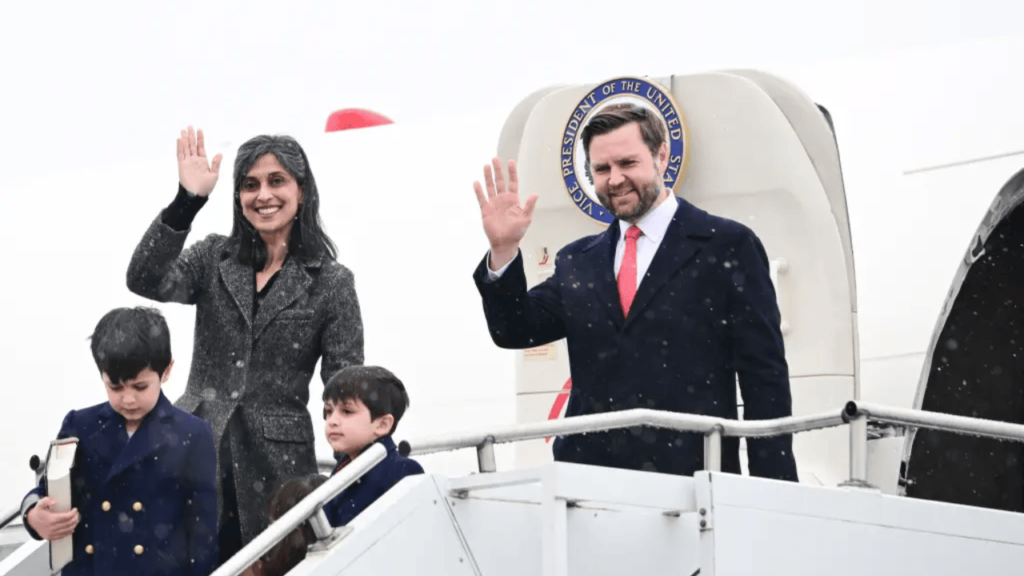JD Vance Visits India: A New Chapter in U.S.-India Strategic Relations


U.S. Senator JD Vance, a prominent voice in the emerging conservative movement and a rising political figure, concluded his high-profile diplomatic visit to India, marking a significant chapter in the evolving U.S.-India strategic partnership. The visit, spanning four days, was aimed at deepening cooperation in defense, trade, technology, and geopolitics, particularly in the Indo-Pacific region.
JD Vance, a Republican senator from Ohio and author of Hillbilly Elegy, has become a leading advocate for realigning U.S. foreign policy around strategic self-reliance and a pivot away from overdependence on China. His visit to India reflects bipartisan recognition in Washington of India’s growing importance in global affairs.
During his meetings with Indian Prime Minister Narendra Modi, External Affairs Minister Dr. S. Jaishankar, and key members of India’s National Security Council, Vance reaffirmed the U.S.’s commitment to strengthening the Quad alliance (comprising the U.S., India, Japan, and Australia) and promoting a free, open, and rules-based Indo-Pacific.
“India is not just a strategic partner; it’s a democratic ally with shared civilizational values and a mutual vision for the future,” Vance said during a joint press conference with Indian officials.
The visit highlighted four key sectors:
Defense Cooperation: Discussions included co-development of next-gen defense equipment, joint military exercises, and enhancing maritime surveillance to counterbalance China’s assertiveness in the Indian Ocean.
Semiconductors & Technology: India’s efforts to boost domestic semiconductor manufacturing were lauded by Vance, who advocated for U.S. firms to invest in India’s rapidly growing electronics sector. A memorandum of understanding (MoU) was signed between the Indian Ministry of Electronics and a U.S.-based chip fabrication consortium.
Energy Security and Clean Tech: With India aiming for net-zero emissions by 2070, both sides agreed to expand collaboration in green hydrogen, nuclear energy, and battery technology. Vance voiced support for amending India’s nuclear liability laws to facilitate U.S. investment in India’s nuclear energy sector.
Cultural and Academic Exchanges: Vance interacted with students and entrepreneurs in Bengaluru and Hyderabad, where he stressed the importance of people-to-people ties. Proposals to streamline visa processes for Indian STEM graduates were also discussed.
The visit comes at a critical time. As China continues to assert dominance in Asia and beyond, Washington is increasingly viewing India as a counterweight to Beijing’s influence. India, too, has been asserting a more independent foreign policy, balancing ties between the West and its strategic autonomy.
Analysts suggest Vance’s visit may lay groundwork for future long-term frameworks in trade and defense. His hawkish stance on China resonated with Indian strategic thinkers who are wary of regional instability, especially in border areas like Arunachal Pradesh and Ladakh.
Trade relations were a major topic. Bilateral trade between India and the U.S. exceeded $190 billion in 2024, and both sides are eager to push that further. Vance pushed for resolving outstanding issues around digital trade, data localization, and tariff structures. He also hinted at support for India joining the Indo-Pacific Economic Framework for Prosperity (IPEF) in a more formal capacity.
Despite the positives, challenges remain. India’s stance on Ukraine, its purchase of Russian oil, and divergence on data sovereignty continue to be thorny issues. However, both sides appeared committed to managing differences through constructive dialogue.
In summary, JD Vance’s visit signifies a maturing relationship that is shifting from transactional to transformational. With the U.S. eyeing greater presence in Asia and India seeking to modernize its infrastructure and defense posture, this partnership seems poised to define 21st-century geopolitics.